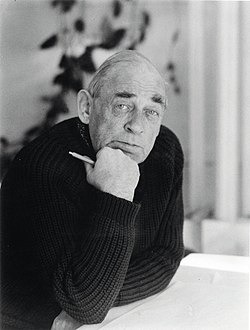Alvar Aalto Quotes
About Author
Hugo Alvar Henrik Aalto (Finnish: [ˈhuːɡo ˈɑlʋɑr ˈhenrik ˈɑːlto]; 3 February 1898 – 11 May 1976) was a Finnish architect and designer. His work includes architecture, furniture, textiles and glassware, as well as sculptures and paintings. He never regarded himself as an artist, seeing painting and sculpture as "branches of the tree whose trunk is architecture." Aalto's early career ran in parallel with the rapid economic growth and industrialization of Finland during the first half of the 20th century. Many of his clients were industrialists, among them the Ahlström-Gullichsen family, who became his patrons. The span of his career, from the 1920s to the 1970s, is reflected in the styles of his work, ranging from Nordic Classicism of the early work, to a rational International Style Modernism during the 1930s to a more organic modernist style from the 1940s onwards.
His architectural work, throughout his entire career, is characterized by a concern for design as Gesamtkunstwerk—a total work of art in which he, together with his first wife Aino Aalto, would design not only the building but the interior surfaces, furniture, lamps, and glassware as well. His furniture designs are considered Scandinavian Modern, an aesthetic reflected in their elegant simplification and concern for materials, especially wood, but also in Aalto's technical innovations, which led him to receiving patents for various manufacturing processes, such as those used to produce bent wood. As a designer he is celebrated as a forerunner of midcentury modernism in design; his invention of bent plywood furniture had a profound impact on the aesthetics of Charles and Ray Eames and George Nelson. The Alvar Aalto Museum, designed by Aalto himself, is located in what is regarded as his home city, Jyväskylä.
The entry for him on the Museum of Modern Art website notes his "remarkable synthesis of romantic and pragmatic ideas," adding
His work reflects a deep desire to humanize architecture through an unorthodox handling of form and materials that was both rational and intuitive. Influenced by the so-called International Style modernism (or functionalism, as it was called in Finland) and his acquaintance with leading modernists in Europe, including Swedish architect Erik Gunnar Asplund and many of the artists and architects associated with the Bauhaus, Aalto created designs that had a profound impact on the trajectory of modernism before and after World War II.
His architectural work, throughout his entire career, is characterized by a concern for design as Gesamtkunstwerk—a total work of art in which he, together with his first wife Aino Aalto, would design not only the building but the interior surfaces, furniture, lamps, and glassware as well. His furniture designs are considered Scandinavian Modern, an aesthetic reflected in their elegant simplification and concern for materials, especially wood, but also in Aalto's technical innovations, which led him to receiving patents for various manufacturing processes, such as those used to produce bent wood. As a designer he is celebrated as a forerunner of midcentury modernism in design; his invention of bent plywood furniture had a profound impact on the aesthetics of Charles and Ray Eames and George Nelson. The Alvar Aalto Museum, designed by Aalto himself, is located in what is regarded as his home city, Jyväskylä.
The entry for him on the Museum of Modern Art website notes his "remarkable synthesis of romantic and pragmatic ideas," adding
His work reflects a deep desire to humanize architecture through an unorthodox handling of form and materials that was both rational and intuitive. Influenced by the so-called International Style modernism (or functionalism, as it was called in Finland) and his acquaintance with leading modernists in Europe, including Swedish architect Erik Gunnar Asplund and many of the artists and architects associated with the Bauhaus, Aalto created designs that had a profound impact on the trajectory of modernism before and after World War II.
